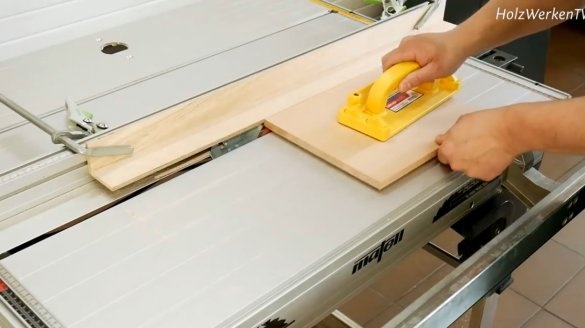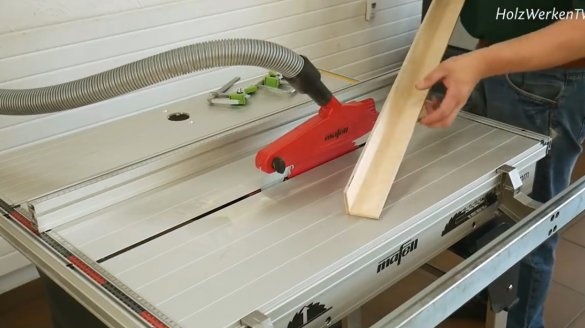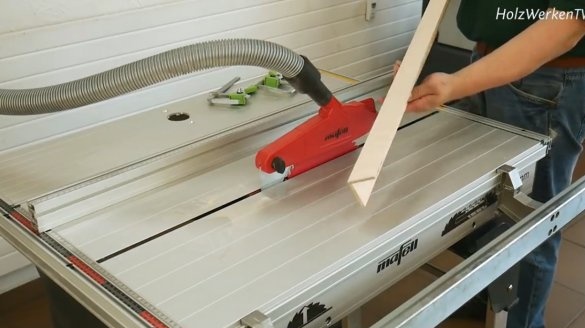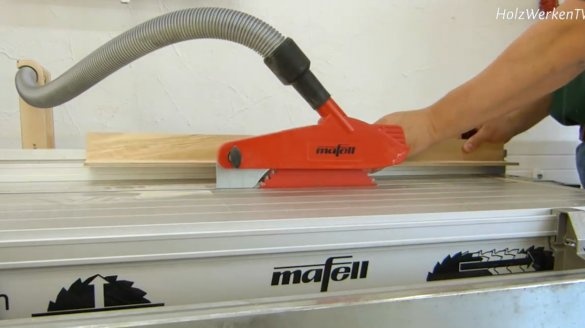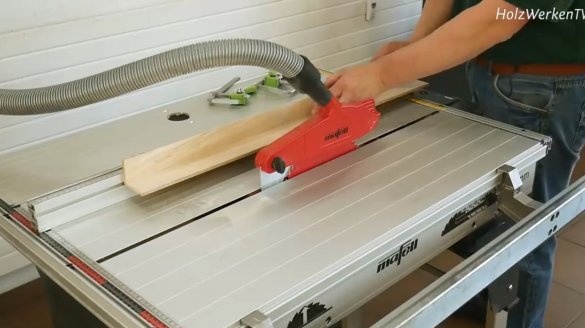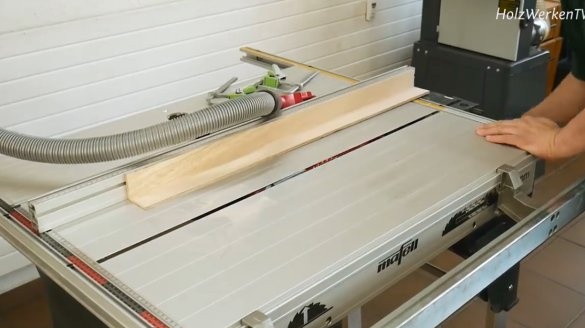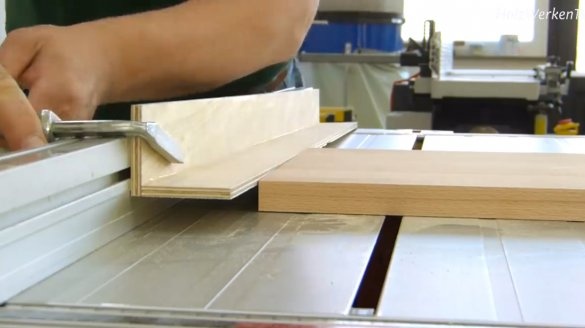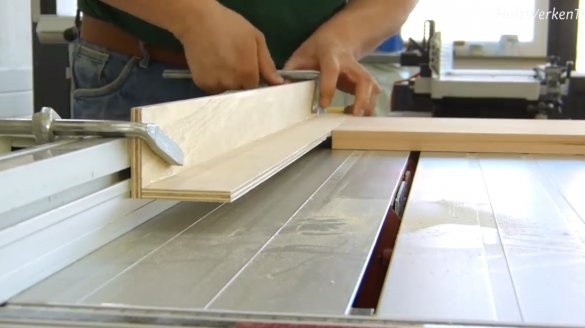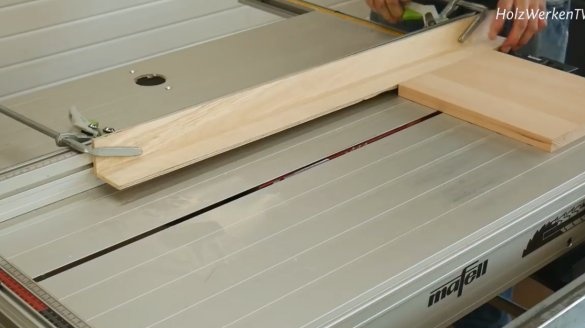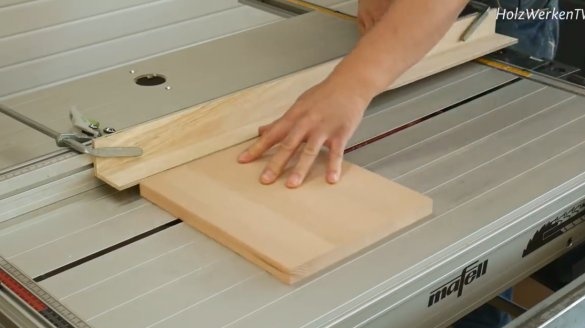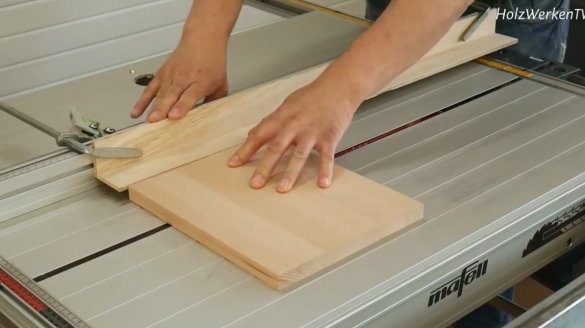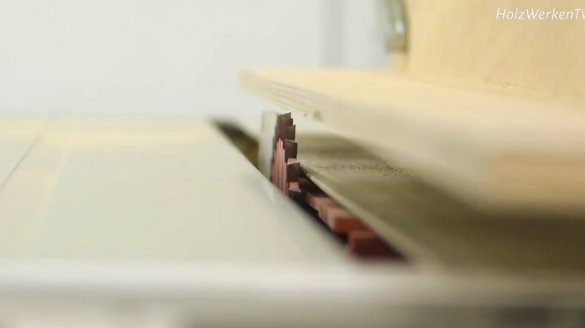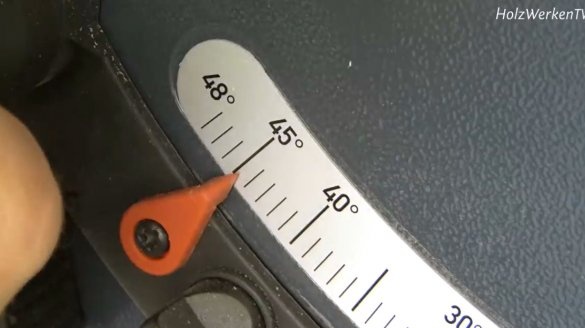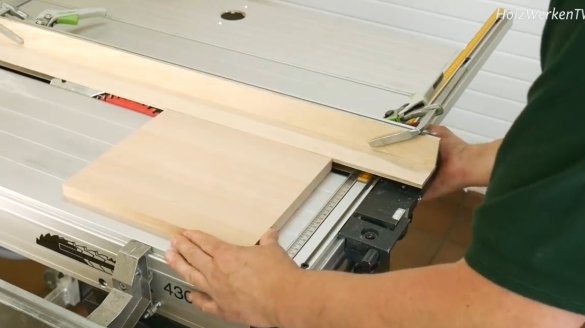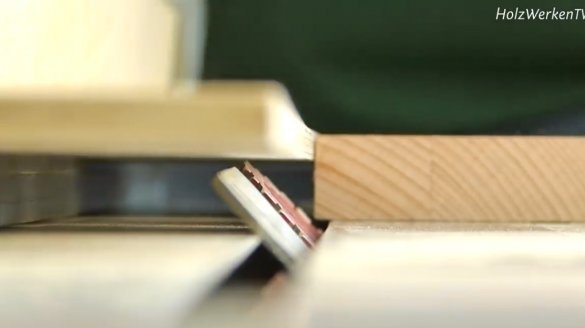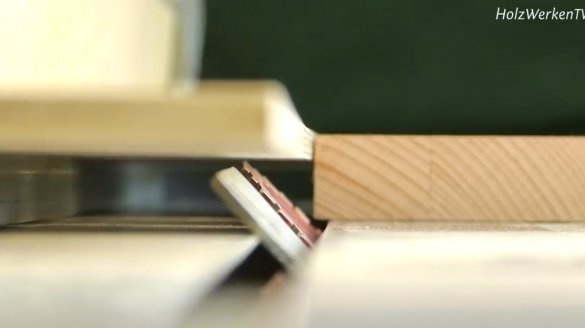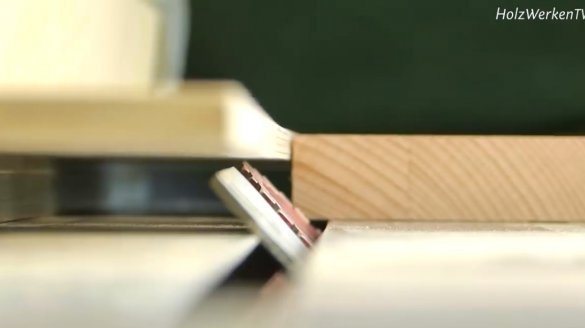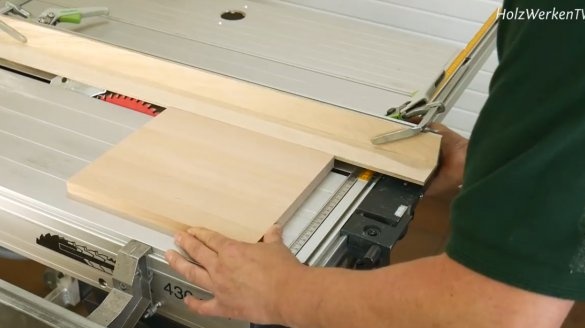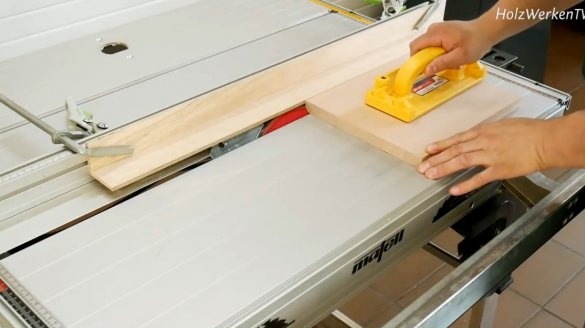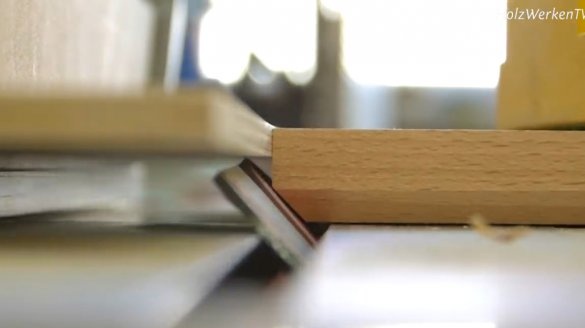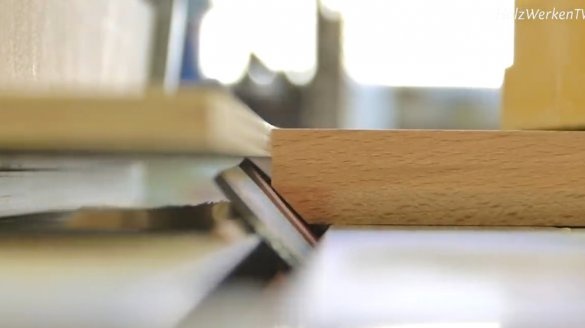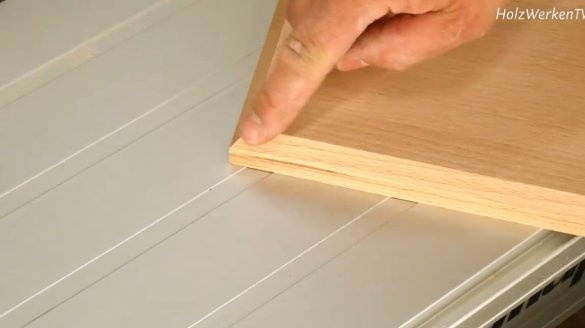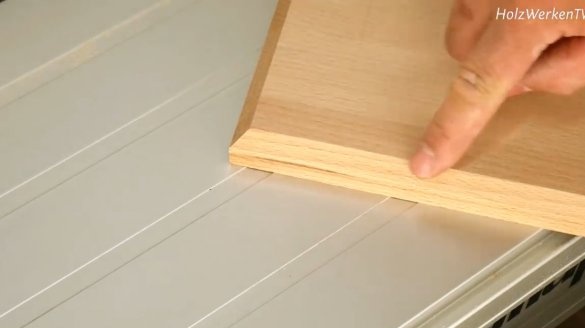Hello dear readers andthe inhabitants of our site!
In carpentry, it is often necessary to quickly and efficiently chamfer. A milling machine, or a manual milling machine, can usually easily cope with this. But what if it is not at hand?
In this article, the author of the HolzWerken YouTube channel will tell you how you can chamfer any size and at an arbitrary angle on a circular saw.
Materials
- Sheet plywood.
Instruments, used by the author.
- Circular saw, pusher
— .
Manufacturing process.
To do this, as an aid, you will need a corner of glued plywood with a width of the base plate of 50 mm, which will need to be tightly fixed to the stop.
First, the protective and exhaust cover is removed, and the proppant knife is lowered along with the saw blade.
After that, the corner is fixed on the stop with clamps. The height of the corner corresponds to the thickness of the workpiece material to be cut. The height should be selected so that the product, even with more severe pressure on it, does not slip under the corner.
This corner is an excellent tool not only for chamfering, but also for other types of work. In particular, for cutting thin rails, planks, baseboards. At the same time, the height of the saw blade is set so that the blade does not touch the corner, and the degree of tilt of the blade is determined by the tilt of the chamfer that is required in the product. This sample uses an angle of 45 degrees.
In this case, the size of the chamfer is set by the distance between the stop and the saw blade. If you look at the disk from the back, you can accurately assess the size of the chamfer. If desired, the wizard can apply fine-tuning the stop to set the width of the chamfer. This is especially true when working with small products.
The top of the saw blade is covered with a plywood corner, and if you use a pusher, the risk of danger to injure your hand will be minimal.
The blanks to be processed in this way need not be only rectangular in shape. They can also be triangular in shape.It is important that the chamfers are adjusted to even edges. But this method does not work on curved, arched products.
The result of the described method are such perfectly sawn bevels that exactly match the corner points. The advantage of this method over milling is that the master can attach a corner of any size to the product, and then even large, wide chamfers will not present a big problem for him.
Thanks to the author for a simple but useful technique for working with a circular saw!
All good mood, good luck, and interesting ideas!
Author video can be found here.

